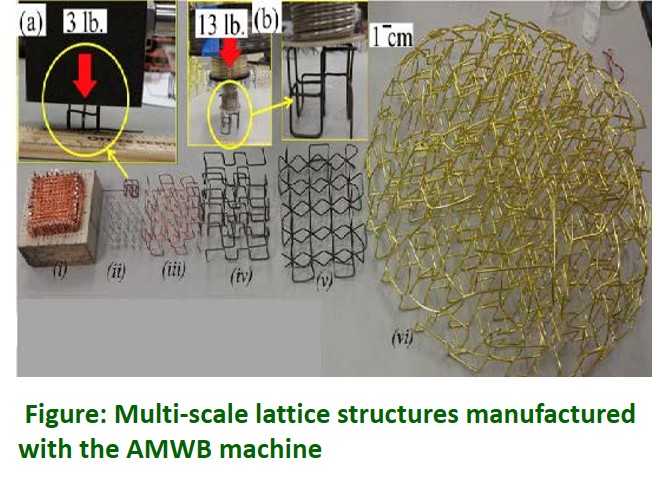Novel Wire Bending Manufacturing System for Performance Driven 3D Structures (RFT-563)
Invention Summary
Even with the progress in 3D printing techniques, there are very few alternatives for producing 2D or 3D lattices for use as support structures in objects needing to be lightweight, strong, and flexible. There is currently no manufacturing system that can bend a linear material rapidly, in multiple axes, in multiple and diverse configurations, and with any size diameter linear material. Researchers at NDSU have developed a novel automatic metal wire bending (AMWB) machine to manufacture performance-driven 3D lattice structures. This manufacturing system overcomes the several drawbacks in the current 3D manufacturing processes and provides a 3D solid appearing structure with desired characteristics. The process is simpler and faster; the resulting scaffolds undergo periodic and/or non-periodic shape conforming during manufacturing itself, omitting the need for any additional shape conforming steps.

Benefits
- Simpler, faster, automated process
- Cost-effective
- Linear material bending
- Bending in multiple axes and configurations
- Customizable sizing of materials
- Controllable properties like heterogeneity, topology-based progressivity, aperiodicity, etc.
Phase of Development
This technology has completed laboratory testing with reproducible results
Applications
- Biomedical devices
- Porous prosthetics
- Drone manufacturing
- Building and roofing solutions
- Automotive components
- Cooling blocks for electronics
- Protective gear
- Defense applications
Patents
This technology is subject of US Patent 11,752,534 and is available for licensing/partnering opportunities.
Contact
NDSU Research Foundation
info(at)ndsurf(dot)org
(701)231-8173
NDSURF Tech Key
RFT, 563, RFT563
Inquire about this technology >